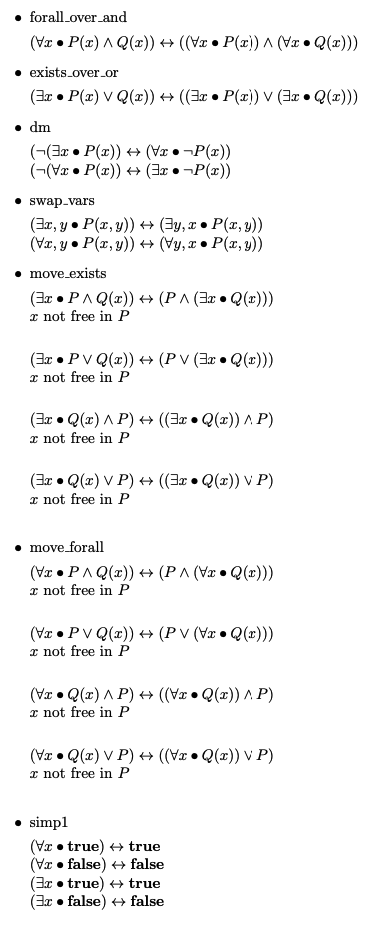In predicate logic, symbols can represent more interesting values like the “flight level of A” and we can use ”<” as a symbol over numbers with its standard meaning
Compared to propositional logic the only possible semantic values for symbols are T and F
Predicates (relations)- Allows us to describe the attributes/properties of values or relationships between 2 or more values- Eg. “Billy is a child”, “Billy” is the value and Being a “child” is an attribute of Billy
Unary Predicate- Predicate that takes a single argumentBinary Predicate- Predicate that takes 2 arguments- and so on, it’s called
n-nary predicate
- and so on, it’s called
UNTYPED Predicate Logic- Symbols are categorized as either functions or predicates, there’s no notion of what kind of value a function returnsType Environment- Set of basic types and types for all the constants and functions in the formulaType Inference- process of figuring out a type environment types for functions, constants, and types for variables that make a formula a wff^d Notation- ^d where d is an element of the universe in the middle of a formula within […] means “in this spot was a variable that has the value d”
- ^d should only appear with […]
Transformational Proof

Natural Deduction
Variable Capture- location in the formula that had a free variables before substitution, has a term containing a bound variables after the substitutionGenuine Variable- Free variable such that the universal quantification of it yields a formula that is true, represents any valueUnknown Variable- Free variable such that the existential quantification of it yields a formula that is true

Semantic Tableaux
